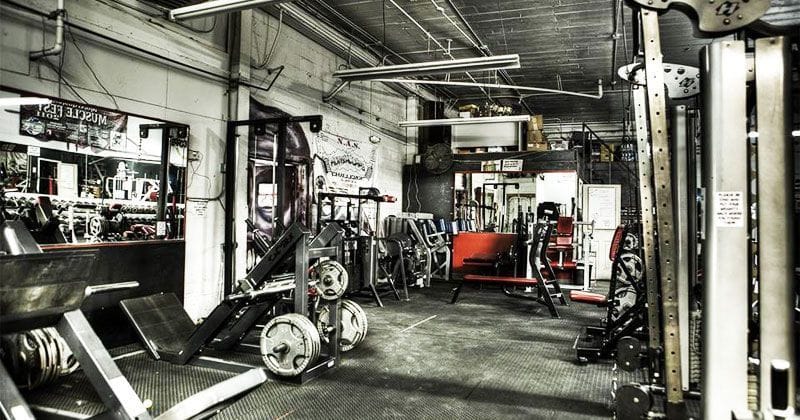Queit Mental Prayer: The Fundamentals

Building a Habit of Prayer
If you've ever tried to start praying and felt like you were just floundering in silence—you're not alone. Like lifting weights after a long break, building a prayer life is awkward, difficult, and humbling. But it’s also possible—and worth it.
Almost no one enjoys the first several training sessions. If the last time you exercised was gym class or a softball game at a family reunion, you're likely weaker than you'd care to admit (and certainly weaker than you'd care to demonstrate publicly) and get winded quicker than you should. For some, starting with an empty barbell is plenty intimidating. The thought of adding weight is downright terrifying. For others, it is insulting. As someone who has posted some reasonable stats in strength lifts, I have had to work my way up from bands in order to rehab joints or muscles and it is a demoralizing position to be in.
Almost no one is naturally good at prayer. We live in a noisy, fast-paced world that views the contemplative life with suspicion at best and disdain at worst. Like a cat on a vet's table, interior and exterior silence are conditions we practically have to wrestle into our lives, then fight to keep there. In prayer, the empty bar for many people will be 5- or 10-minute blocks of time. We all start somewhere, and the muscles we use for prayer are typically so underdeveloped—even atrophied—that we simply cannot attempt more, even if we desire it.
We must look at the empty bar as a tool. Rather than calling attention to our weakness, it serves as the means to learn new and complex movement patterns under manageable loads. Short periods of quiet mental prayer begin to train the prayer muscles and attune our hearing to listen to God later on. This is the uncomfortable beginning of the habit. We feel silly, we worry about doing it wrong, we're sore, and possibly hungry. We look at our phone too much or think, "I could be taking a nap right now... I should be taking a nap right now!" Starting is hard and is something you just have to suffer through, knowing that the habit you're working to build is worth it.
Learning the fundamentals early and learning them well is key to your success. Ignoring good form now will mean weeks of working with lighter weight later to relearn technique, because your technique—not your strength—will be the limiting factor. Neglecting the principle of progressive overload—gradually adding weight over time—will lead to burnout or, worse, injury. Warm-ups may not seem like a big deal today, but when you're ready to squat 600 pounds and go into the hole (the bottom portion of the squat) with cold joints, well... write me a postcard from post-op.
The fundamentals aren't glamorous, but they're the building blocks that win Olympic gold and create saints. Mother Teresa wasn't born in the Adoration Chapel; Michael Phelps wasn't born in a pool. Let’s lay out the fundamentals so you can build a routine that’s strong, sustainable, and easier to troubleshoot when (not if) things get tough.
Form
For our purpose, form consists of when, where, and how you pray. Right off the bat, I'm going to assume you're taking this seriously, and that means your commitment is daily. A key training principle is that the more you do something, the better you get at it. This is why my bench press plateau on my way to 300 was solved when I switched from benching once a week to three times a week, and it's why some athletes don't bench press at all. Practice does make perfect.
When – The consensus is that heavy prayer work—the spiritual equivalent of the deadlift—is best done in the morning. I've done it this way before, and I have to agree. For some, this means fitting 10 minutes of quiet prayer into an already existing and structured routine. For others, it means one less 9-minute snooze on the iPhone. Do everything you can to pray in the morning. If you already say a daily Rosary, the Liturgy of the Hours, or another devotion, do these after. The alternative is nighttime prayer, and while that can work, I’ve found it’s best to have a few solid weeks of morning prayer under your belt first. The quality of the mind and spirit are different at these two times, and nighttime can offer unique challenges that morning does not.
Where – Where you pray is probably the most important fundamental. Ideally, it’s a place that is naturally quiet. I do not mean always quiet; if your living room is like mine, it's quiet at 6 AM but chaos at 6 PM. It is naturally quiet in the early morning and late evening. Outdoor venues are a good option… until weather or seasons make them impractical. You want a place that is comfortable to sit in for extended periods of time, with minimal distractions or possibility of unexpected interruptions (your garden may be a peaceful place to pray; your chatty neighbor may have other ideas about that). If you're especially fortunate and have a church near your home or work, or even a chapel at work (as many hospitals or universities do), I am envious.
How – Entire books are dedicated to the "How" of prayer, but for now, I’ll give you a few strong starting points. If your timer is set for 10 minutes, spend 5 minutes talking to God and 5 minutes listening. Talk with Him like a best friend or an especially good lawyer. Lay out your worries, your joys, your questions about your life and about Him—there’s no wrong way. Then spend 5 minutes listening for that “still, small voice.” And yes, it really is still and small, and often comes in the form of nudges, thoughts, or inspirations we likely would not have had of our own accord.
Another excellent option is lectio divina. I’ve found this to be a great starting point for almost everyone. Lectio divina provides structure, which is what so many of us really need in the early stages of the interior life. To make it simple: take your Bible and find the Daily Readings from Mass, or use a devotional that includes Scripture for each day. Read the passages several times, slowly. Read aloud once or twice. Pay attention to a line, phrase, or even single word that jumps out at you, that pulls on your heart, or nudges your spirit. Talk with God about that. My own lectio practice often sounds like, “I know this is true, God, I just don't know if I believe it's true for me.” When God speaks to us in quiet prayer, it can be hard to hear or discern His voice from our own (although it gets easier with time), but He always speaks to us through Sacred Scripture.
My final suggestion is to use the exercises outlined in St. Francis de Sales’ Introduction to the Devout Life. The meditations in it are perfect for learning to pray while setting a firm spiritual and theological foundation on which to build your interior life.
Consistency
Many elite athletes end up refining their training or adopting practices that we mistakenly think are the reason for their success. I know I’m guilty of watching a favorite bodybuilder using a variation on an exercise, then rushing to try it myself. We must remember that we only get to break from the fundamentals when we've mastered them—and that mastering them is what built the athlete, not the niche practice they just talked about on a podcast.
Consistency is king in all things. It trumps your programming, your gym equipment, even your nutrition. Consistency can outwork mediocre genetics. The single most important thing for you to worry about is showing up to talk with God every day. The Venerable Bruno Lanteri was fond of saying, “Begin again,” and this must become your mantra.
Did you oversleep and miss your morning prayer window?
Begin again.
Did you fall asleep while praying?
Begin again.
Did you spend 9 minutes out of 10 thinking about grocery lists or doctor’s appointments, or that coworker who snubbed you in the meeting yesterday?
Begin. Again.
The saints weren't born holy. It is only in hindsight and after their death that we call them saints. Would you expect to walk into the gym on Day 1 and set a world-record squat? Would you expect to win the Boston Marathon if you signed up on a whim with zero training? No? Then do not let your humanity and failures keep or excuse you from spending time with your Father. Do your very best to keep the commitment you’ve made, but be prepared for the inevitable stumbles and falls along the way. Remember, you must be moving to stumble in the first place. God's expectations of us rarely exceed our own.
And believe that God will show up. Like a personal trainer, He's there in the beginning to encourage and guide you. You may not feel anything exceptionally miraculous, you likely will not have visions or be imparted with sacred wisdom, but this is a relationship you're building, and if you have a best friend or a spouse, that relationship did not happen overnight but developed with intentional time and organic intimacy. God is no different. Make the time, stick to it, and you'll find your prayer muscle and relationship with God growing in tangible, fruitful ways.
Bonus — If this feels a bit too reductive or elementary for you, or if you're someone who likes a challenge (as I am), I have two books to recommend. The Ignatian Adventure by Fr. Kevin O'Brien and Journey with Jesus by Larry Warner walk you through the Ignatian Spiritual Exercises over 9 months. It is a structured format that will teach you new methods of prayer, give you new tools for the journey, and, most importantly, lead you gently to a profound encounter with Jesus. The Exercises changed my life, and that is an understatement. Both books are excellent, but for someone with no experience or reference point for Ignatian spirituality, The Ignatian Adventure gets my vote. Bonus tip: buy two copies so your spouse can join you, or to give away.





Member discussion